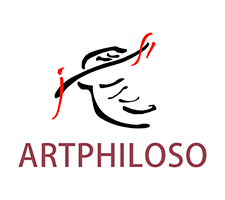In April 2025, an incident at Rotterdam’s Boijmans Van Beuningen Museum sent shockwaves through the art world: a child accidentally scratched Mark Rothko’s monumental painting Orange on Grey on Maroon, No. 8, causing damage valued at approximately $58 million (¥410 million CNY). This sparked global debate—some questioned museum security, others criticized parental supervision. But a deeper question emerged: Why does a painting of “color blocks” command such astonishing value and attention?

From Immigrant Son to Master Artist: A Life Forged in Struggle
Mark Rothko (1903–1970) was born in Dvinsk, Russian Empire (now Latvia). His Jewish heritage cast early shadows of discrimination. After immigrating to the US in 1913, hardship persisted—his father’s death forced him to leave school, working as a tailor, newspaper boy, and even a Broadway theater handyman.
Though he won a scholarship to Yale at 21, it was revoked within months amid anti-Semitic policies. Struggling through poverty, he studied art part-time, later reflecting: “Art was a lonely path in my youth—no galleries, no money. Yet it was golden—having nothing meant I could pursue my vision without limits.” This forged the tragic intensity and resilience pulsing within his work.

From Subway Sketches to Color Revolution: An Artistic Language Transformed
Rothko began as a realist. In the 1930s, he painted solitary figures in New York subways, their elongated forms hinting at spiritual tension beyond realism.
By the 1940s, inspired by Surrealists like Miró, he explored myth and the subconscious (e.g., Omen using crosses to imply suffering). His true breakthrough came after 1947—he abandoned recognizable forms, creating his iconic “Color Field” paintings: vast canvases with softly blurred rectangular blocks, layered with thin washes of oil to emit a breath-like glow.
“I’m interested only in expressing basic human emotions—tragedy, ecstasy, doom…”
This vision earned global acclaim at his 1960 MoMA retrospective, cementing him as a central figure in Abstract Expressionism. He refused to title works, using numbers only, compelling viewers to confront the raw emotional power of color.


Market Legend vs. Inner Torment: The Unquiet Soul
Despite fame, Rothko battled profound despair. He loathed how capital commodified art—while painting murals for the Four Seasons Restaurant in New York’s Seagram Building, he feared they’d become “original artwork for sale to decorate the wealthy.” This conflict intensified in his final years. After an aortic aneurysm in 1968, his palette darkened into heavy blacks, purples, and browns, foreshadowing his end.
Yet the market’s fervor never waned:
• 2012: Orange, Red, Yellow sold for $86.9M, a then-record for contemporary art
• 2023: “Untitled, 1968 fetched $23.9M at Sotheby’s
• His works consistently rank among the world’s top 10 most valuable artworks
In February 1970, he took his own life. His unfinished Houston “Rothko Chapel” project became his spiritual testament—14 dark monumental panels creating a meditative space embodying his belief that “art is a religious experience.”
Global Exhibitions & Collector Insights: Why He Endures
55 years after his death, Rothko’s influence grows:
• Louis Vuitton Foundation, Paris (2025): 115-work megashow hailed as “a must-see event”
• National Gallery of Art, Washington: Major paper-works exhibition revealing his experimental process
• Asia Culture Center, Seoul (July 2025): Spotlighting him as the “soul of the New York School”
For collectors, Rothko represents enduring cultural value—his works fuse human depth with visual revolution, their scarcity and academic prestige fueling market confidence. As the Dutch restoration proves: Each Rothko is an irreplaceable vessel of emotion, preserving sacred stillness in our noisy world.

“You think my paintings are serene like stained glass? Look again—I am the most violent of all American painters. Beneath the pigment lies the ultimate catastrophe.”
Rothko’s own words capture his art’s eternal tension. Standing before Orange on Grey on Maroon, No. 8, viewers feel the shared human drama swirling within seemingly calm hues. This is why the museum pledged: “It will return”—because Rothko doesn’t belong behind glass, but to anyone seeking their reflection in color.
For Collectors: While Rothko’s original paintings for sale command museum-level prices, his legacy inspires new generations. If you seek to buy art reflecting profound emotional depth, explore trusted art gallery online platforms. For those drawn to abstraction, consider emerging talents—up and coming artists to invest in often show on leading artist websites. Whether you wish to buy abstract paintings online or discover original art for sale, prioritize platforms with strong provenance. Remember, great art—like Rothko’s—transcends decoration; it transforms space and spirit.
